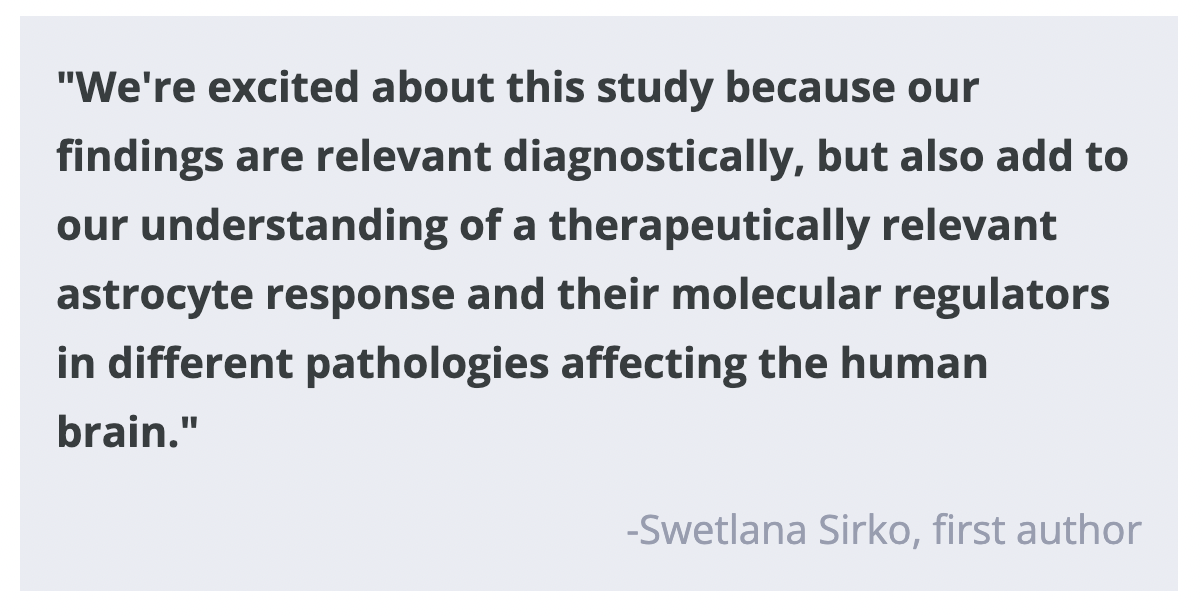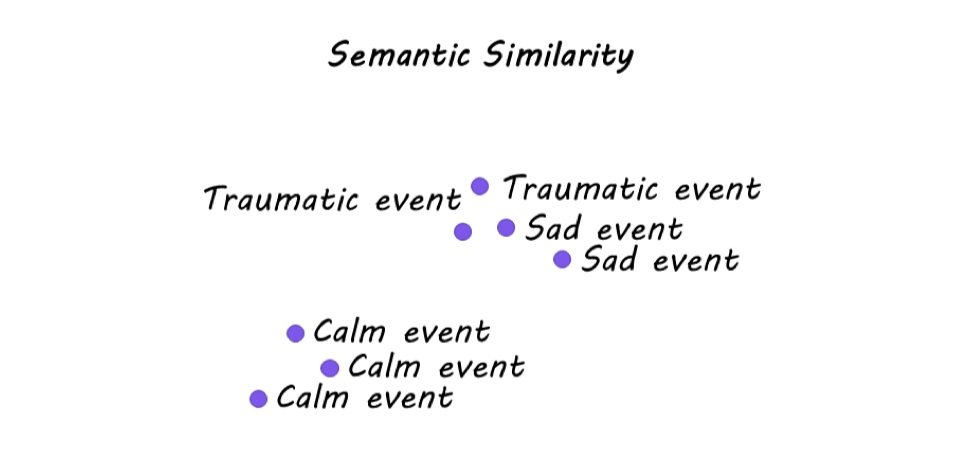5 Important Advances in Neuroscience this Year
Post by Meredith McCarty
The takeaway
As the field of neuroscience continues to advance, we highlight 5 notable research advancements from 2023. While this is by no means a comprehensive list, we sought to outline some important advances and exciting future research directions. With these technological and theoretical advances, we step closer to understanding brain function and ways to implement these findings for clinical application.
Mapping the whole brain of the mouse and fly
Mapping the neural diversity and connectivity patterns of the brain has been a research goal of neuroscience for many decades. The idea behind this pursuit is that, through mapping the cells and connections of the brain, we can gain insight into network dynamics, neurodevelopment, and functionality. Within the past year, this has culminated in several major feats: a whole brain atlas of the mouse brain, as well as a whole brain connectome in the fly.
The BICCN (BRAIN Initiative Cell Census Network) has published numerous articles this year outlining their work in developing a whole brain atlas of the mouse brain. They used a variety of methods to measure the connectivity and genetic diversity of both neuronal and non-neuronal cells; a massive effort with broad implications for future work in the field.
The goal of connectome research is to reconstruct each neuron’s connectivity pattern using electron microscopy. As such, this method is comprehensive yet quite methodologically complex and time consuming. The first neuronal wiring diagram of the fly brain has been released this year, outlining the connectivity and diversity of the 130,000+ neurons in the adult fly brain. These efforts to quantify the connectivity patterns and cellular diversity of the brain at many scales have enormous utility for future neuroscientific research, as these resources will help us map out and understand how the brain works.
Advances in decoding brain activity in humans
The goal of neuroprosthesis research is to assist in decoding intended movement, speech, and other faculties in the impaired brain. To implement this process, scientists use neural interfaces to record brain activity and relate these neural signals to behavior, in a process known as decoding. Within the past year, there have been numerous advances in the development and implementation of brain computer interfaces (BCIs) in humans.
In terms of advances in brain recording interfaces, several research groups have successfully used microelectrode devices to record activity from single neurons in the human brain. This scale of recording offers insight into neural dynamics at a level previously inaccessible in human research. Through careful implementation as a part of clinical treatment, these electrode recordings continue to offer invaluable insight into neural dynamics.
A prominent application of BCIs is to decode intended speech from neural data. Within the past year, the algorithms used to interface between neural data and speech output have advanced greatly with the implementation of predictive language models. Experimentally, by recording hundreds of trials’ worth of data from an individual, and labeling the speech sound or word presented in each one, researchers can decode words and syllables from repeated patterns of neural activity. With the use of predictive language models, this process has been advanced, with a higher success rate of predicting intended speech from neural activity within individuals. The continued advances in both BCI hardware and decoding software have exciting implications for clinical and research applications.
Progress in understanding human consciousness
What exactly makes us human? Although numerous theories of consciousness have gained prominence over the years, there has not been much consensus in the field. In 2018, Melloni and colleagues at the Allen Brain Institute sought to remedy this through an open science adversarial collaboration, also known as COGITATE. The goal of this adversarial collaboration was to design careful experiments to test the predictions of several prominent theories of consciousness. The theories in question are the Global Neuronal Workspace and the Integrated Information theories. The first results from this collaboration have been released as a preprint. Interestingly, there has been much discourse surrounding the predictions, experimental design and analyses, and tentative conclusions ascertained in this collaboration.
The pursuit to experimentally quantify the neural correlates of consciousness (meaning the minimal neuronal mechanisms jointly sufficient for any specific experience) in the brain remains complex and controversial. However, the implementation of adversarial collaborations, both in consciousness research and other research areas, seems a profound and interesting way to collaborate across theories and disciplines.
New ways of treating mental health disorders like depression and PTSD
In the past year, there has been much research into psychedelic therapy for the treatment of various psychiatric disorders. This area of research primarily implements non-invasive neuroimaging, such as functional magnetic resonance imaging, to study neural changes involved in psychedelic treatment. For example, recent work from Dai and colleagues revealed that nitrous oxide, ketamine, and LSD all led to changes in brain network connectivity, specifically increased between-network and decreased within-network connectivity. Additionally, recent research revealed that MDMA in combination with psychotherapy has promising therapeutic benefits for people with posttraumatic stress disorder (PTSD) and alcohol use disorder. To more clearly understand the mechanism of action of psychedelic therapy in the brain, Moliner and colleagues quantified changes in receptor binding in mice given psychedelics. They found evidence that psychedelics directly bind to a specific brain-derived neurotrophic factor receptor, and promote antidepressant-like effects.
These research directions have interesting implications for understanding the mechanism of action of psychedelic treatment in the brain. Of note, there is some dissent regarding whether psychedelics should be directly compared with psychotherapy and other treatment methodologies in a clinical setting. As such, both classical and psychedelic research offers continued insight and progress in the treatment of various psychiatric disorders.
Predicting language patterns using AI
This year has seen a lot of excitement around AI systems helping us to analyze and predict language. AI is also being used to help advance our understanding of the human brain. Large language models (LLMs) are trained on enormous datasets, comprising trillions of words and more data than a human could process in their lifetime. While these LLMs have been successfully implemented in many applications, from data analysis to text generation, whether LLMs can tell us anything about how the brain performs language is another matter entirely. An interesting research project called the BabyLM Challenge, sought to explore these unanswered questions more directly. In this challenge, researchers train language models on linguistic data similar to what a human is exposed to while developing language. The results of research efforts like the BabyLM challenge have implications for neuroscientific, linguistic, and machine learning fields. For example, LLMs could be trained on large clinical data sets to identify patterns or associations that would be difficult for humans to detect manually.
The results from the BabyLM Challenge were just published, outlining the 31 submissions from research groups around the world. The submission that performed the best came quite close to human performance (88%) on tested language skills, with a training set of 100 million words. There is some debate as to the metrics used to quantify model performance, but these results have interesting implications. While LLMs are trained to capture the statistics of natural language and predict text generation, whether LLMs are learning any underlying structure or rules of language (and how this compares with human language development) remains an underexplored topic of research.
References +
(1) Krzysztofiak J, 2023. BICCN: The first complete cell census and atlas of a mammalian brain. Nature.
(2) Dorkenwald S. et al., 2023. Neuronal wiring diagram of an adult brain. bioRxiv.
(3) Schlegel et al., 2023. Whole-brain annotation and multi-connectome cell typing quantifies circuit stereotypy in Drosophila. bioRxiv.
(4) The year of brain-computer interfaces. Nat Electron 6, 643 (2023). https://doi.org/10.1038/s41928-023-01041-8
(5) Willett F.R. et al., 2023. A high-performance speech neuroprosthesis. Nature.
(6) Metzger S.L. et al., 2023. A high-performance neuroprosthesis for speech decoding and avatar control. Nature.
(7) Warstadt A., et al., 2023. Proceedings of the BabyLM Challenge at the 27th Conference on Computational Natural Language Learning. Association for Computational Linguistics.
(8) Charpentier L.G.G. & Samuel D., 2023. Not all layers are equally as important: Every Layer Counts BERT. Proceedings of the 27th Conference on Computational Natural Language Learning.
(9) Martinez H.J.V. et al., 2023. Evaluating Neural Language Models as Cognitive Models of Language. Association for Computational Linguistics.
(10) Melloni L., et al., 2023. An adversarial collaboration protocol for testing contrasting predictions of global neuronal workspace and integrated information theory. PLOS One.
(11) Mashour G.A. et al., 2020. Conscious Processing and the Global Neuronal Workspace Hypothesis. Neuron.
(12) Tononi G. et al., 2016. Integrated information theory: from consciousness to its physical substrate. Nature Reviews Neuroscience.
(13) Melloni L., et al., 2023. An adversarial collaboration to critically evaluate theories of consciousness. bioRxiv.
(14) IIT-Concerned et al., 2023. The Integrated Information Theory of Consciousness as Pseudoscience. PsyArXiv Preprints.
(15) Lau H., 2023. What is a Pseudoscience of Consciousness? Lessons from Recent Adversarial Collaborations. PsyArXiV Preprints.
(16) Wall M.B. et al., 2023. Neuroimaging in psychedelic drug development: past, present, and future. Molecular Psychiatry.
(17) Dai R. et al., 2023. Classical and non-classical psychedelic drugs induce common network changes in human cortex. NeuroImage.
(18) Gully B.J. et al., 2023. Treating posttraumatic stress disorder and alcohol use disorder comorbidity: Current pharmacological therapies and the future of MDMA-integrated psychotherapy. Journal of Psychopharmacology.
(19) Hasler G., 2023. Psychotherapy and psychedelic drugs. Lancet Psychiatry.





